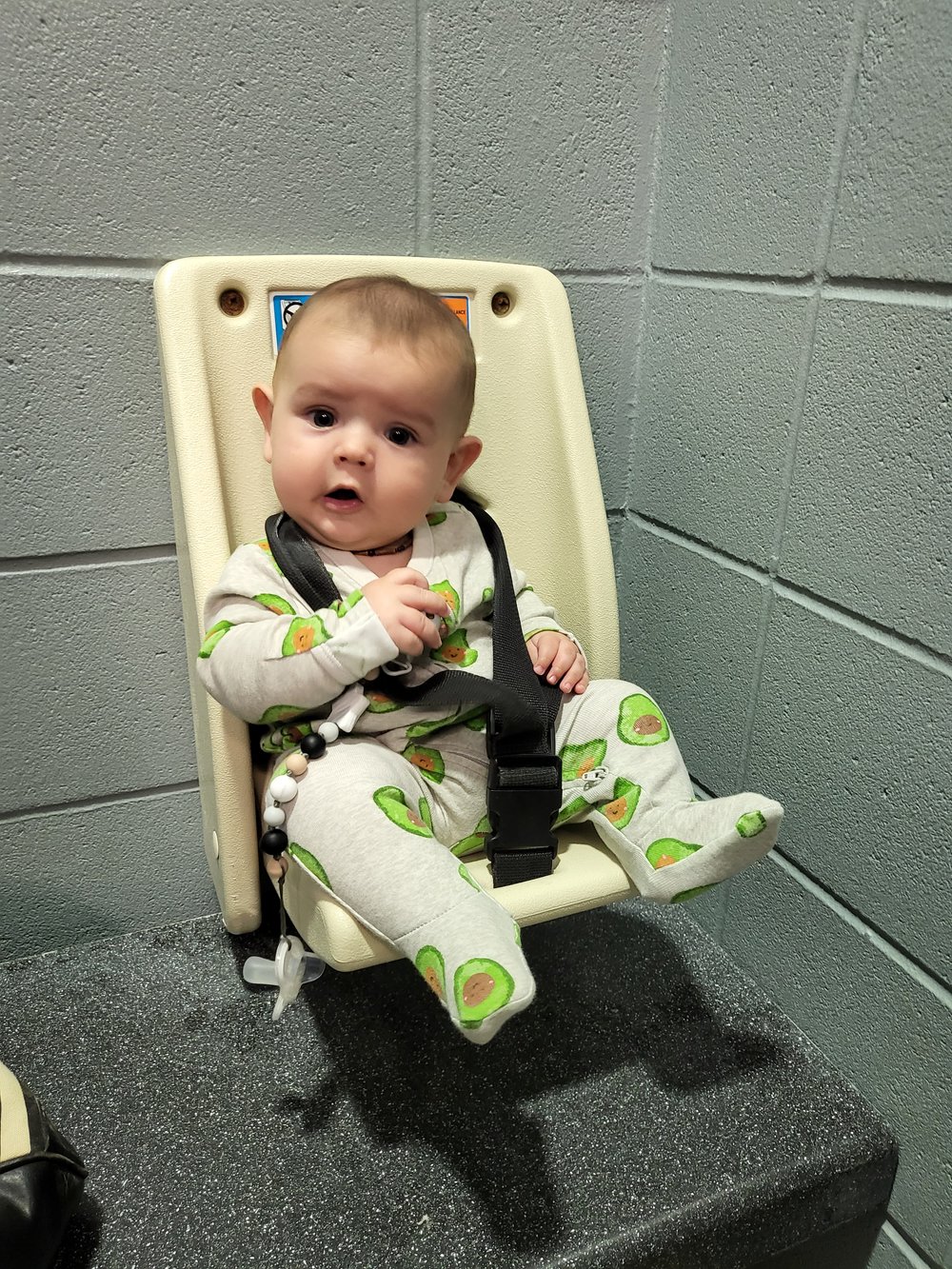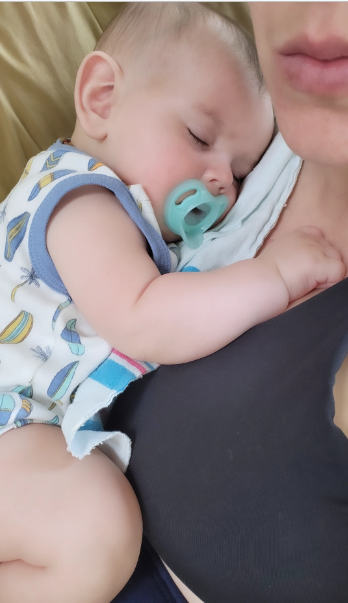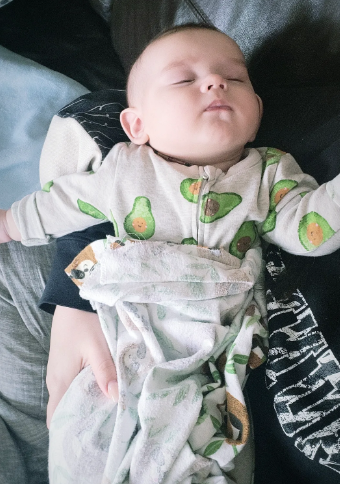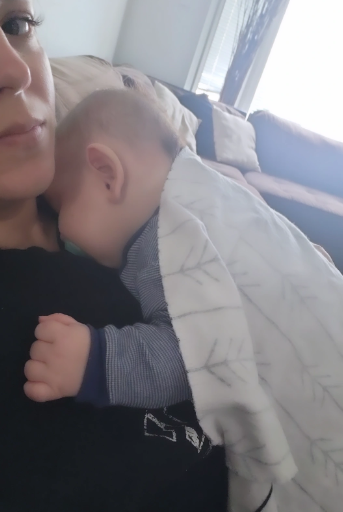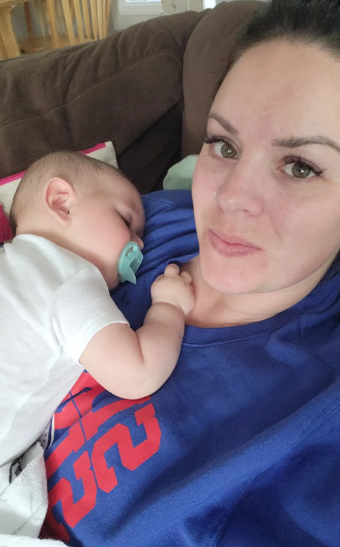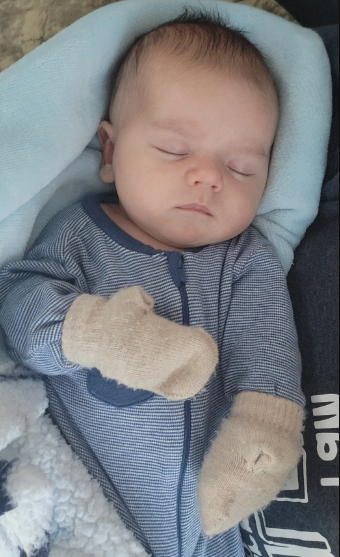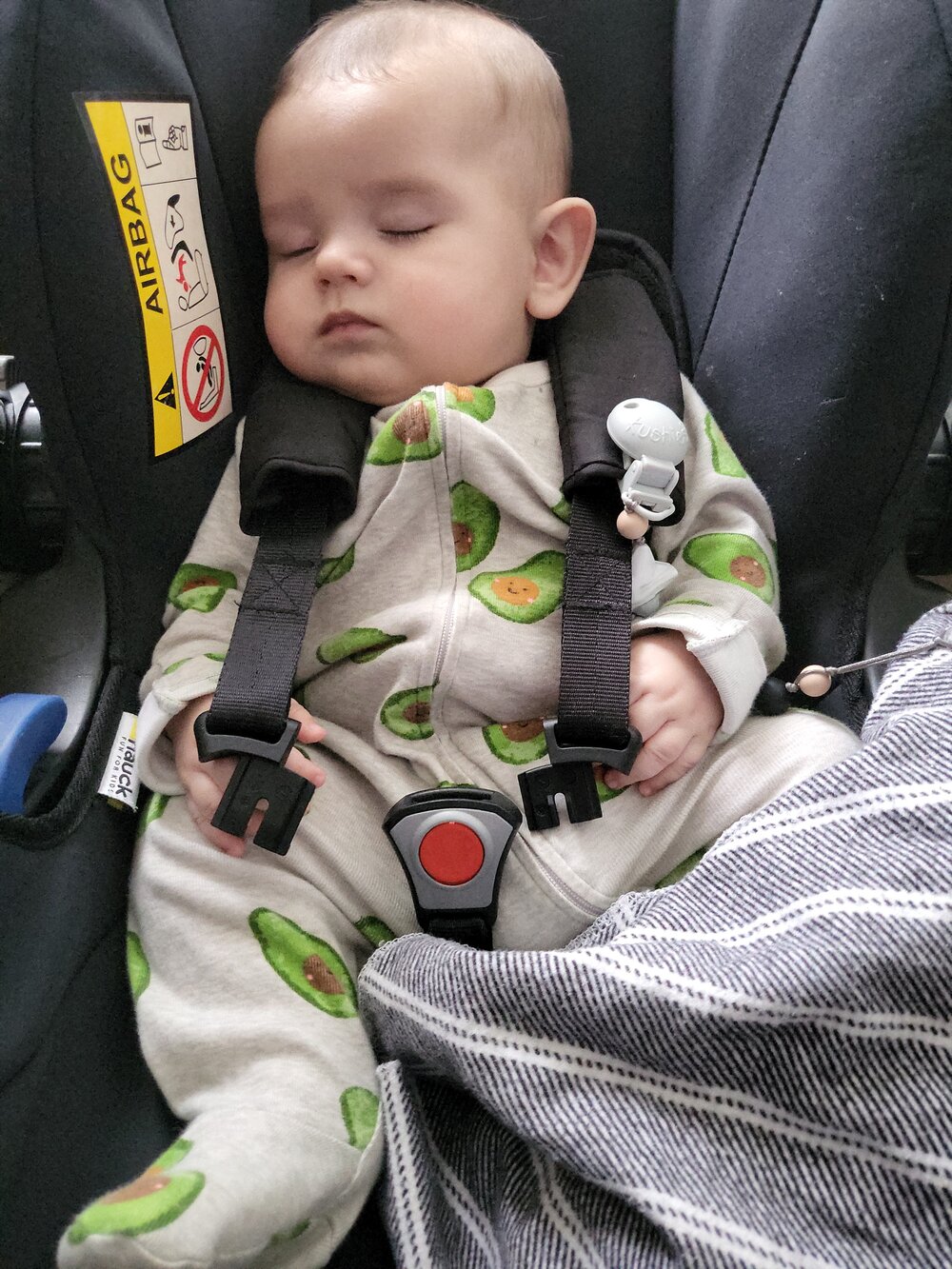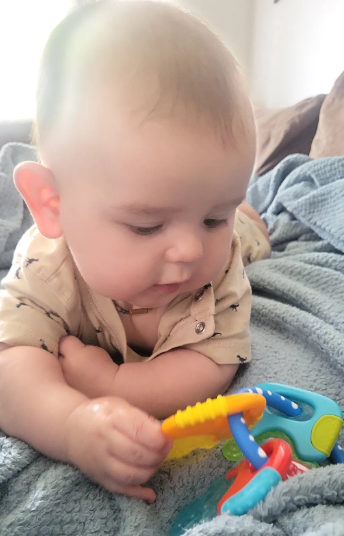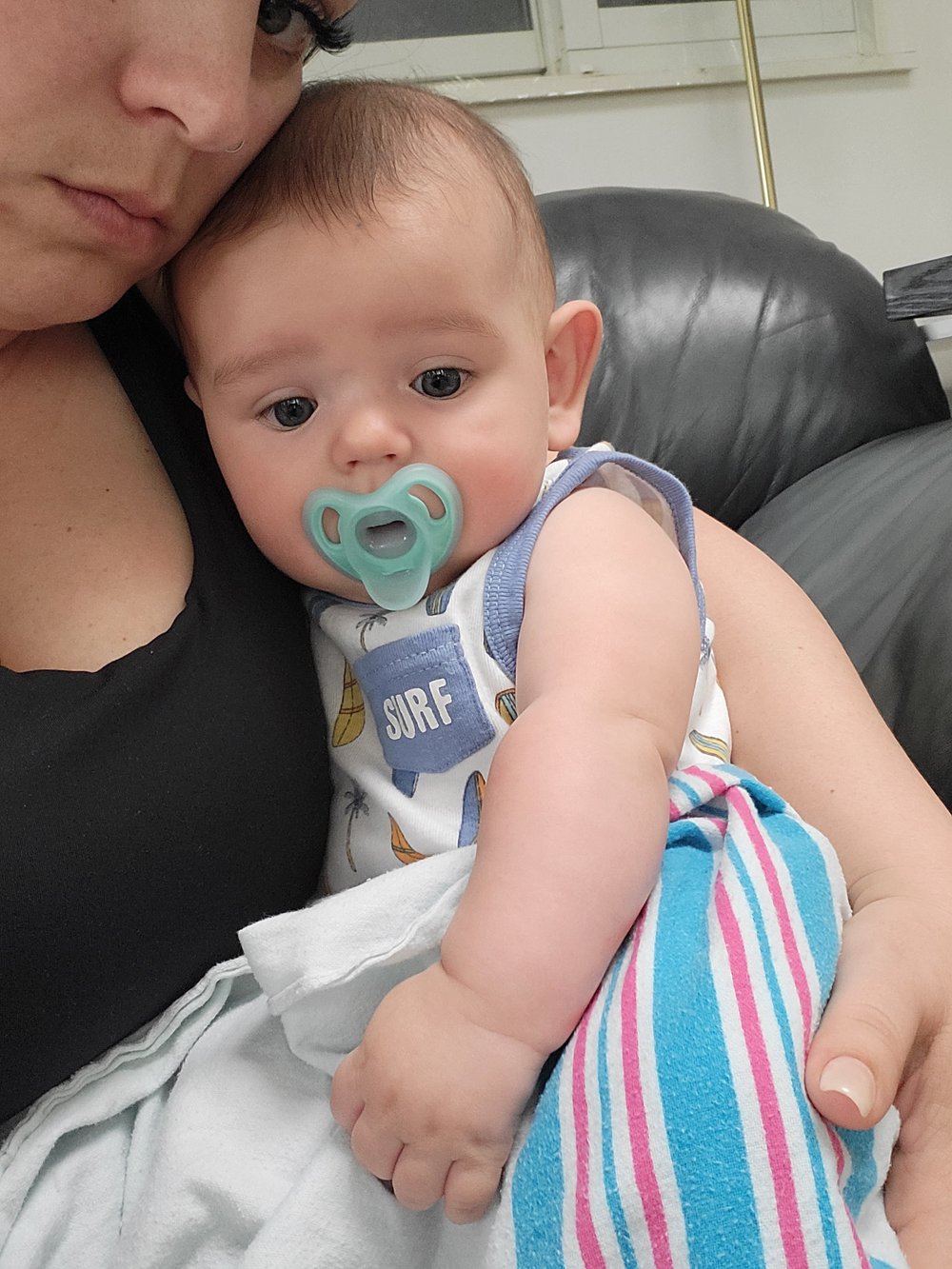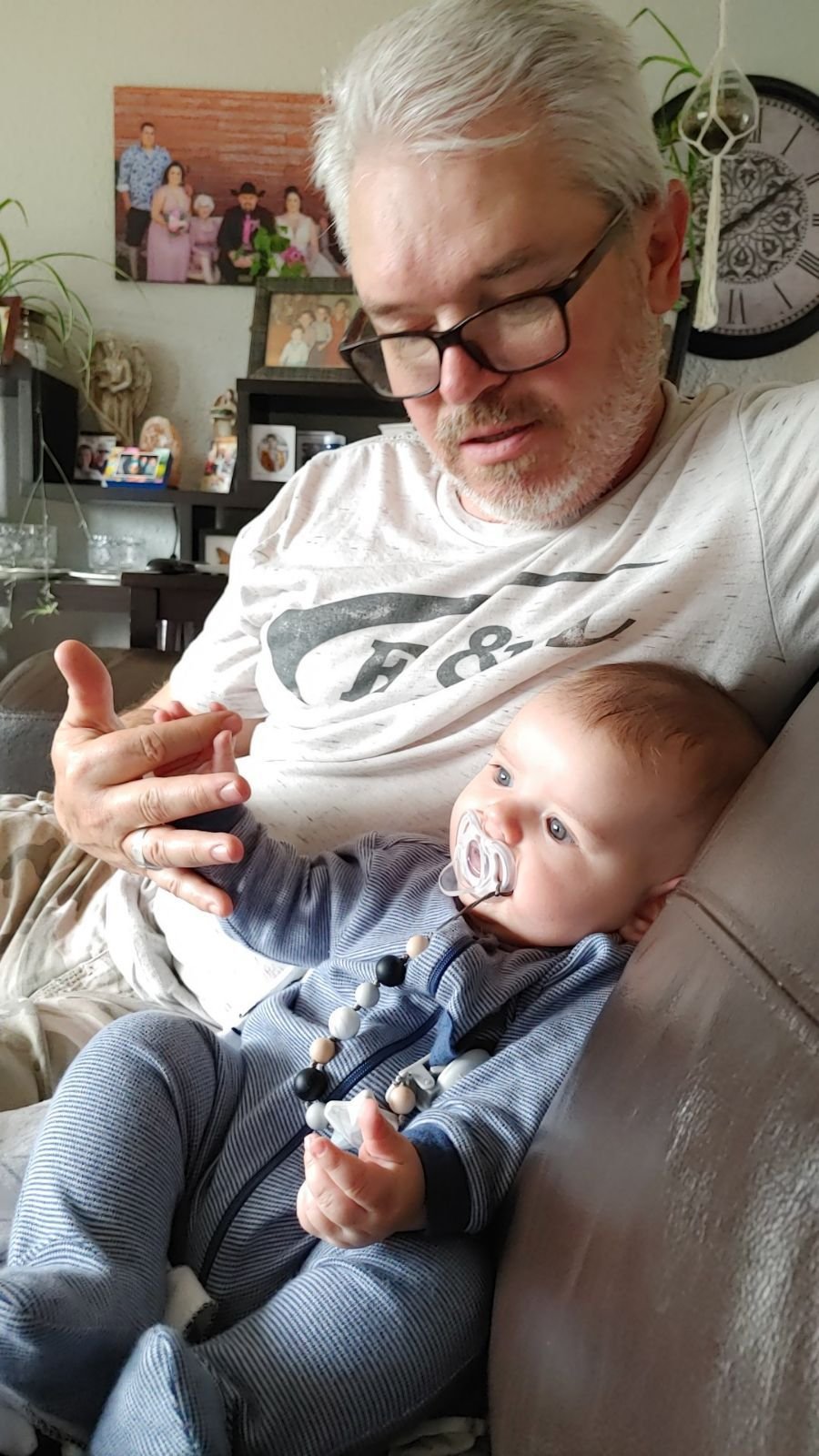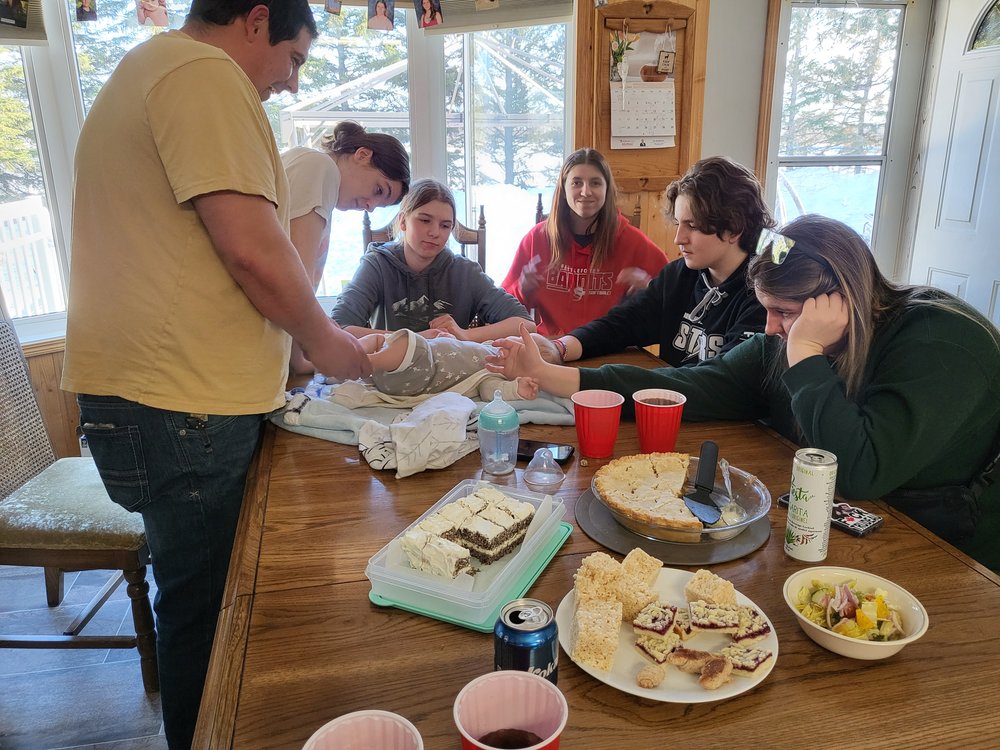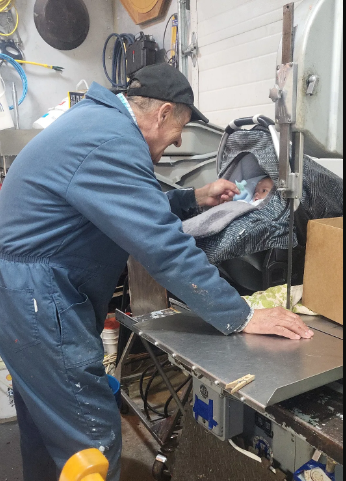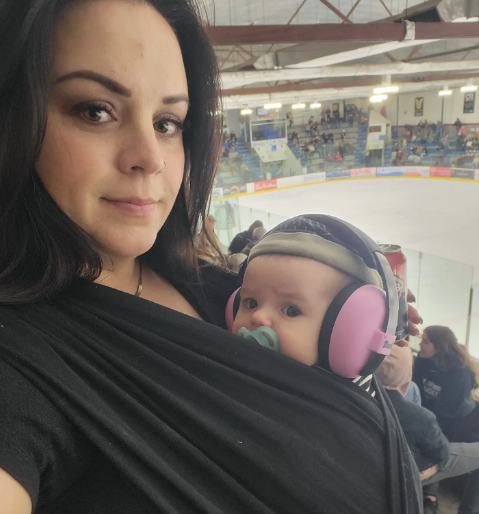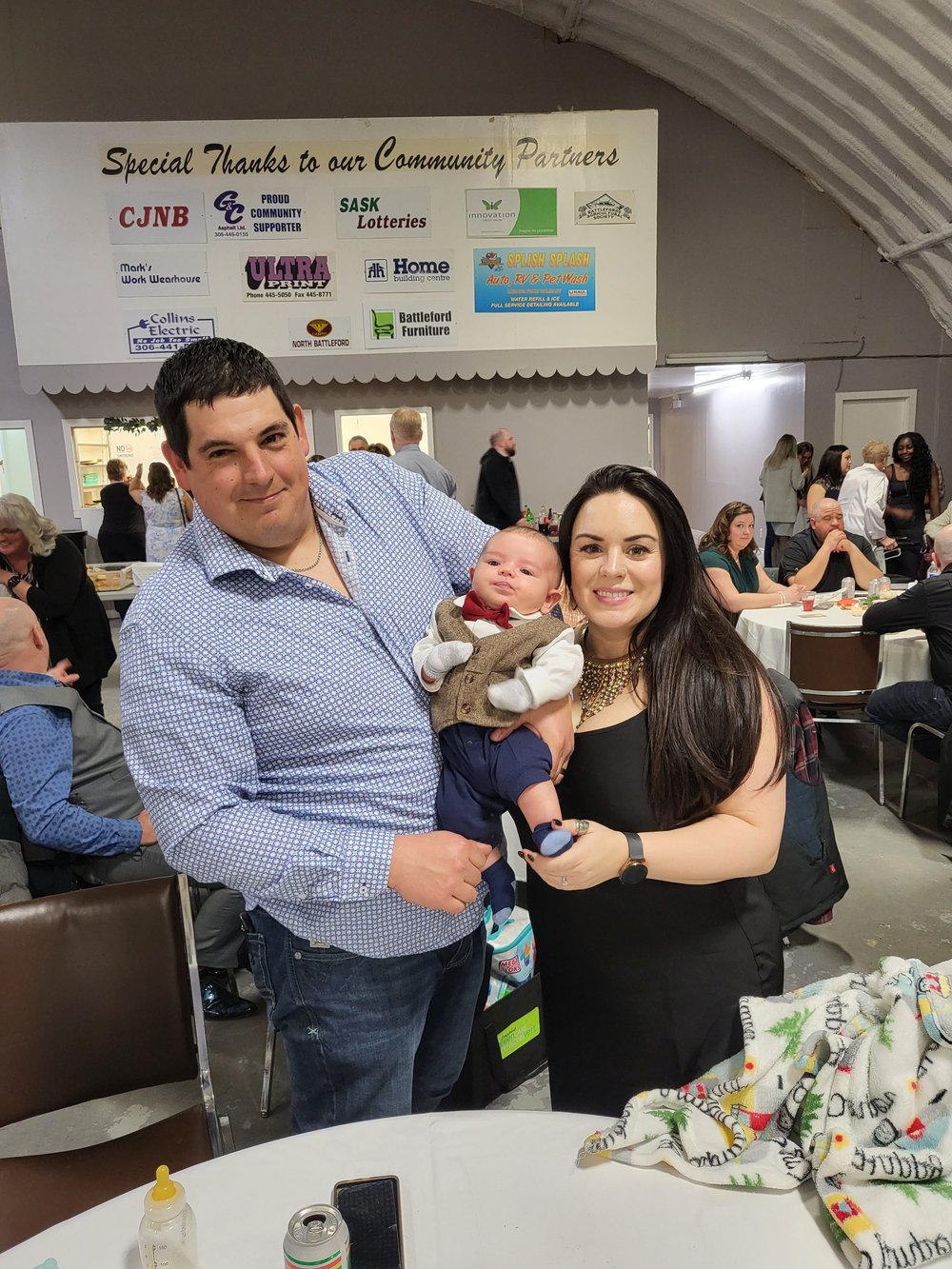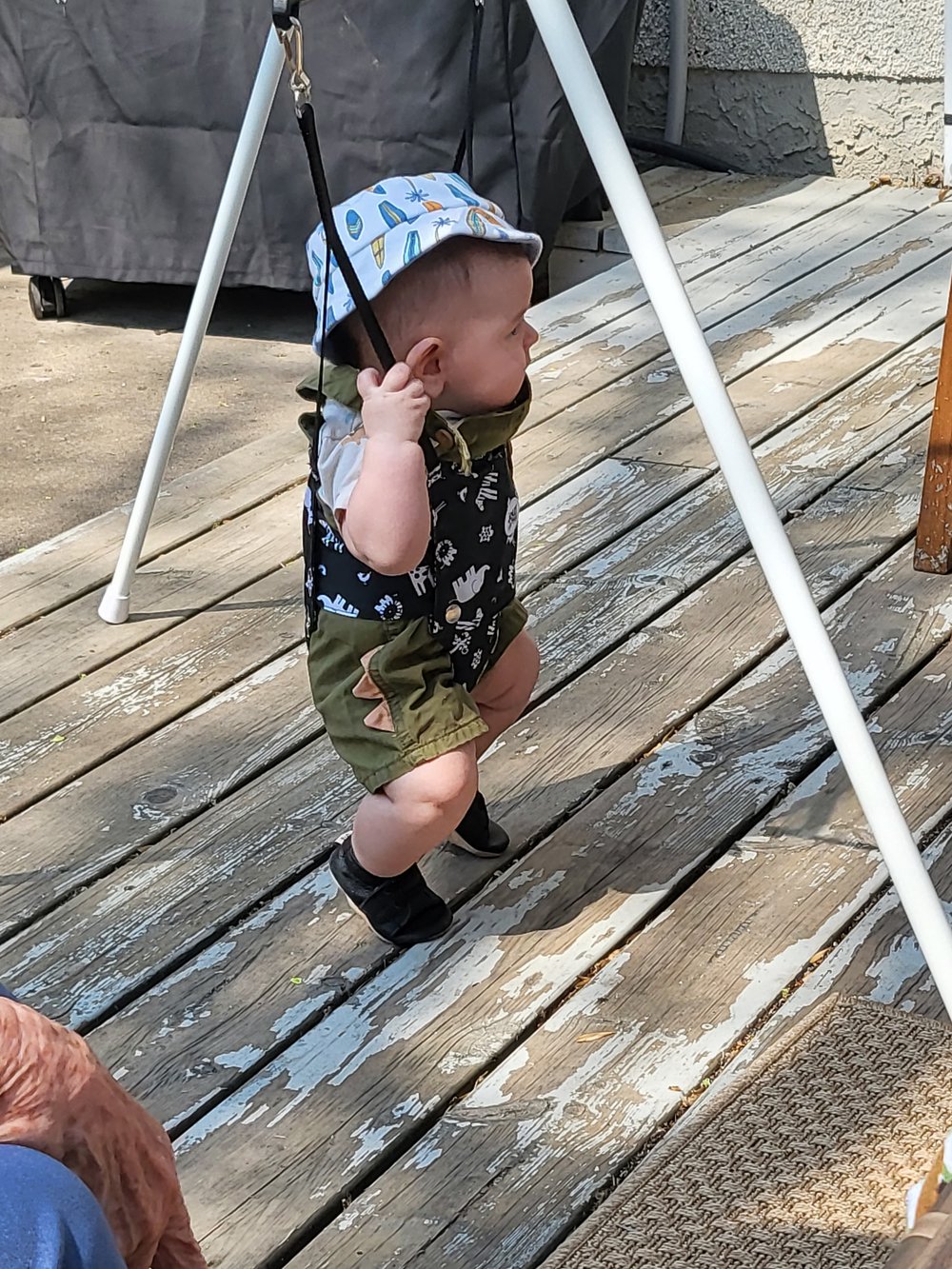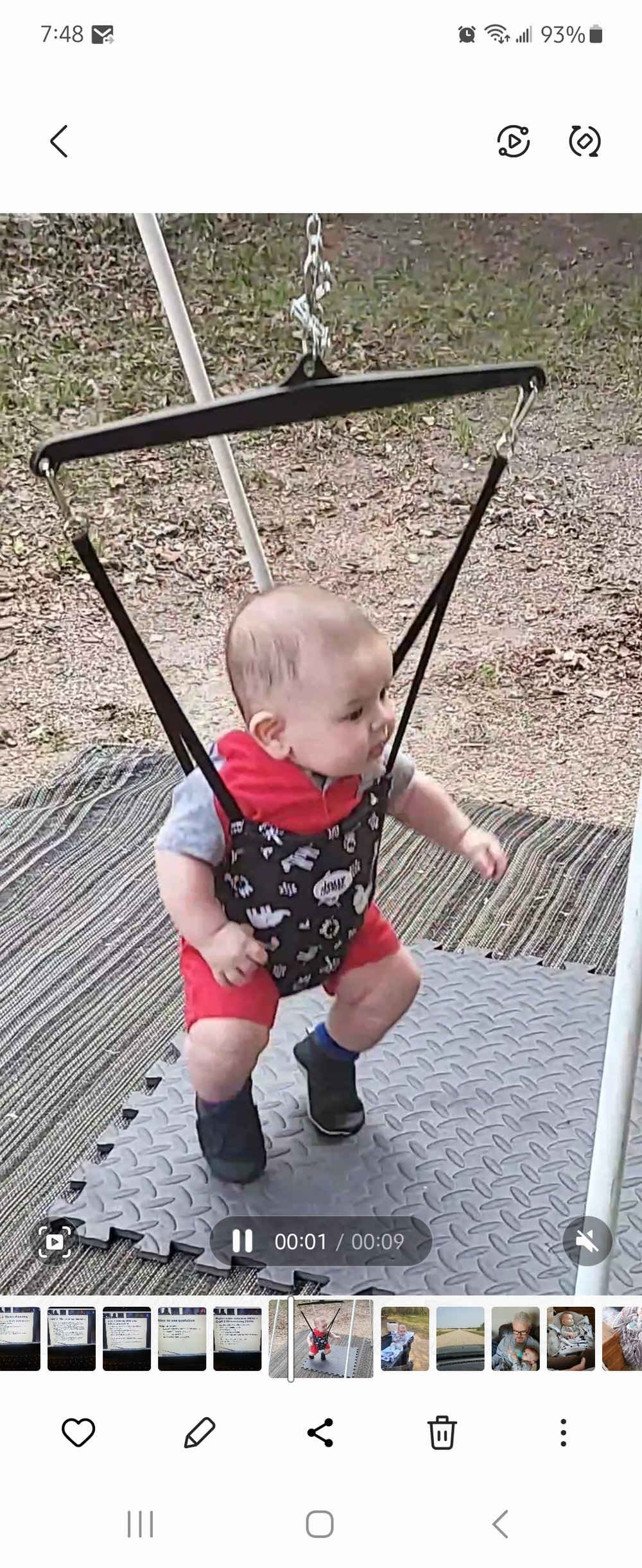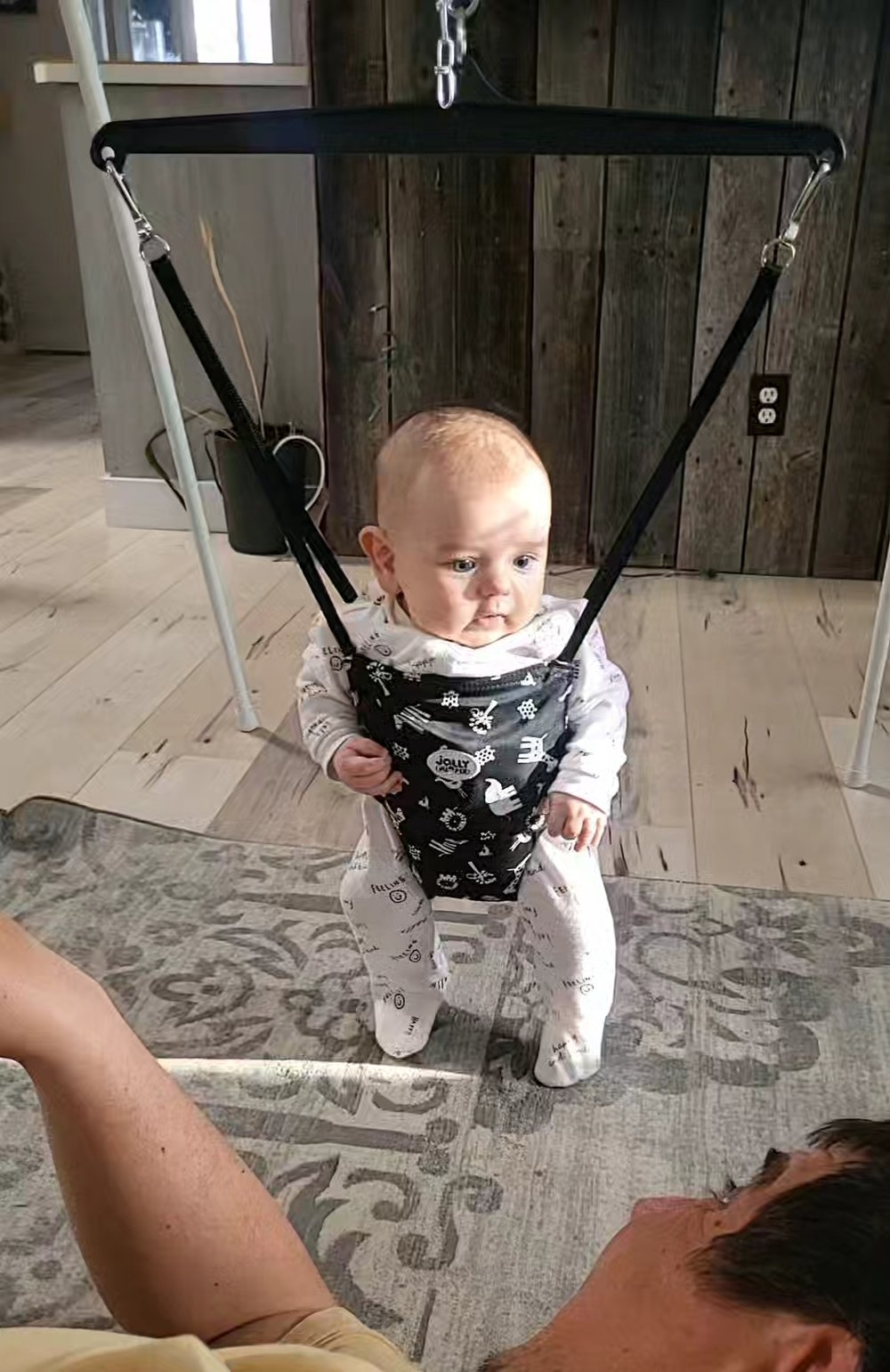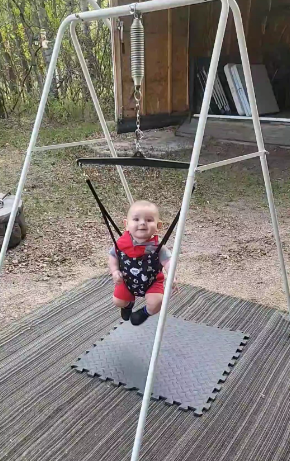The day has finally come to wrap up my ‘how to’ mom learning experience… maybe. Who knows if I will continue to share my journey from time to time? I will say that I’m amazed at just how many new experiences came my way in such a short amount of time. Being a first-time mom I had no idea what to expect. I anticipated sleep regression and some milk increases but I hadn’t expected to be feeding my 5-month-old full meals of solids, taking him swimming and him loving it, and him growing at such an incredible rate.
SLEEP
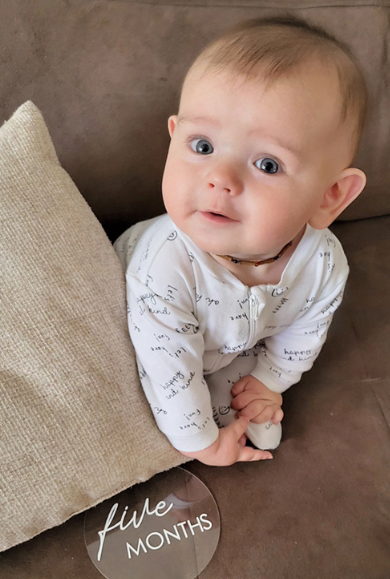
Kolt’s sleep has improved incredibly. He went from fussing and taking short periods of sleep or naps to whining for a few minutes when he’s tired, accepting his soother, and then sleeping for 6 hours at a time at night. I can’t say that I did anything special to change this. I just held him if he was fussing to calm him down and then placed him down to see if he would fall asleep on his own. If he couldn’t, we had an assisted sleep and if he did, GREAT! Unfortunately, I can’t refer to any sites at this time because in the thick of it all, I just went with my ‘mommy gut’ and responded to what I thought he needed at the moment.
When researching for tips and information about sleep patterns, sleep training, and sleep regression I found a lot of useful sites. For the most part, they seemed to align with one another. What varied were the beliefs about what is appropriate and what is outdated and should be avoided. Of course, this is going to be common on any topic depending on parenting styles and how people were raised. Narrowing my searches from “sleep regression” to entries like “4-month sleep regression AND tips” or “3.5-month baby sleep regression AND signs” yielded far better results, obviously, but at least then the results were more consistent. Most inconsistencies on the topic of sleep were due to a 3 am mom-brain while feeding Kolt or pumping.
SWIMMING
We have ventured out to the local swimming pool once again and this time my husband got to come with us! Once again we started in the warm lazy river water and made our way out to the deeper water. He loves to be bounced in and out of the water and he was even more comfortable being laid back into the water. He still shrugged his shoulders and became slightly tense when we laid him back in the water but after repeated attempts, he became more confident each time.

After 35 minutes in the water, we moved to the shallow end (which has warmer water) where we sat and he could stand. He did some splashing and jumping but quickly became tired. My husband laid him in the water and slowly drifted him back and forth and we could see his eyes starting to close and he was nearly falling asleep. The swim adventure had not only tired him out but it made my heart happy to see how happy and relaxed he was in the water. My entire goal of taking him swimming so early is to build his confidence in the water, have him be happy and calm in it, and eventually become a strong swimmer.
When searching for information about taking babies swimming the information was fairly generic but easy to find. A lot of results focused on swimming lessons but with more refined searches like “baby AND swimming first time” I was able to find the information I was looking for. I often wonder how moms felt prior to the internet when they were deciding what to do with their babies when it came to topics such as this. I’m aware that they never had anything like the internet to compare it to but I can only imagine that some must have felt some angst or apprehension.
I feel comfortable bringing him to the pool on my own now and I know he will grow to love the water more and more over time. I plan to take him to the pool a few more times in the next few weeks. I am hoping that by the end of July, the lake water will be warm enough to take him for some shallow water swims on weekends.
FOOD
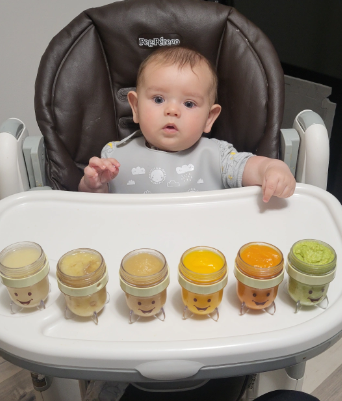
We’ve come a long way since my last food post with Kolter. We went from pureed avocado to now eating apples, potatoes, sweet potatoes, butternut squash, pears, carrots, peas, bananas, and peaches. I love prepping the food for him and feeding him has become an event. He’s such a good eater and loves his food. I’ve started calling him meatball because when he grabs his feet he is so round I could roll him!
I did look for some guidance from Pinterest to see how much food is recommended per feeding but I quickly realized that the information I was finding was inaccurate largely due to the fact that solids are uncommon under the age of 6 months.
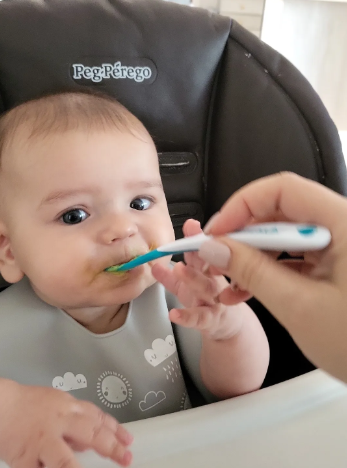
This is something I found very common when searching online. If the topic or event I was searching for was uncommon or not “widely recommended” then the results were minimal, varied, or incredibly inaccurate. For example, this site that I found seemed very well written but when I took notes and asked for clarification from the local feeding specialist, Naida Hawkins, she said it seemed as though that was a personal preference and not at all what medical experts or specialists would recommend. In fact, the recommendation from both the feeding specialist and the pediatrician was to feed Kolt until he lost interest or stopped asking for more (holding his mouth open) because stopping early can cause an association in the brain that food is scarce. This connection between being fed and food possibly being scarce can cause babies to become gluttonous and anxious while eating. This can also trigger indigestion and reflux in a baby.
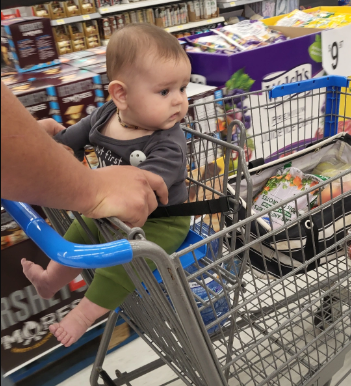
When I was searching for what to feed Kolt the information was very consistent. It seems that no matter what the information remains relatively the same - avocado, banana, sweet potato, and apple. These seem to be the most common starter foods and I was relieved that the information was consistent because, as a nutritionist, food is something we take seriously in our household and we love ALL food. I was happy to start Kolt early on foods so that his likeliness of food aversions could be reduced. My plan is to continue introducing new foods to Kolt each week and hopes that he shows no signs of sensitivity or allergies! So far we haven’t had any issues, luckily. We also ensure we take him grocery shopping so he becomes interested and involved in the process and will grow to want to help and be interested in trying new foods.
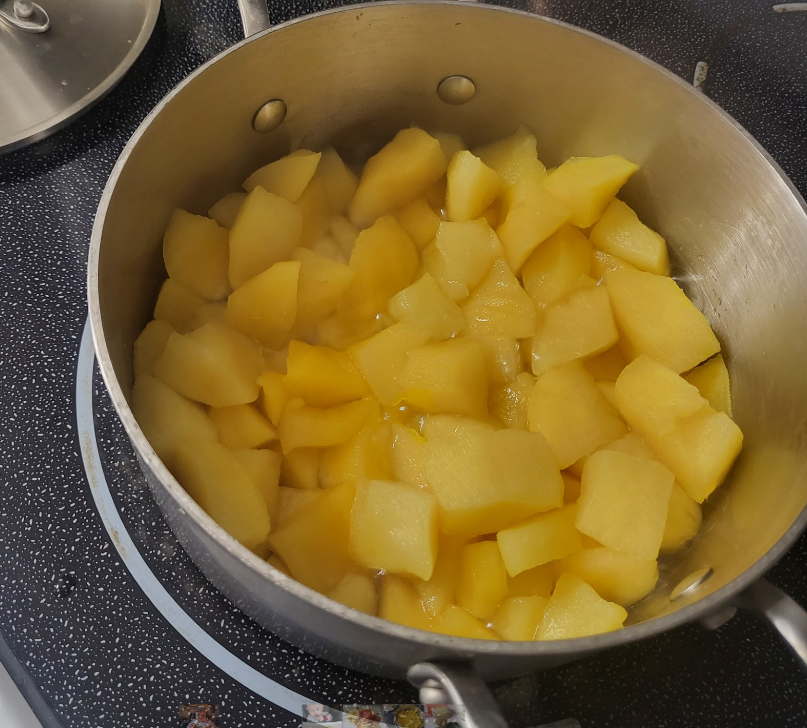
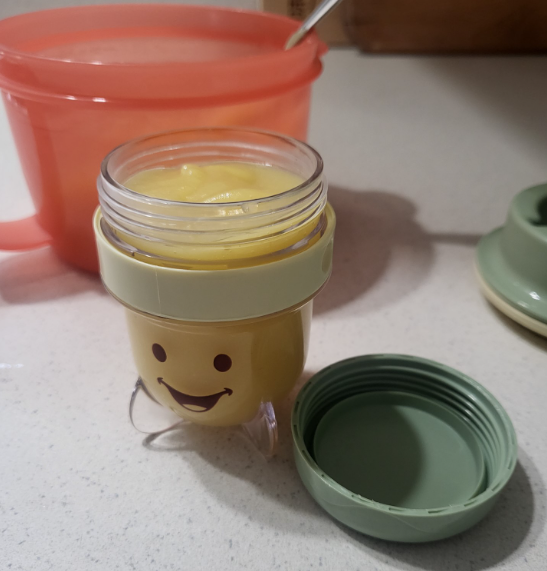
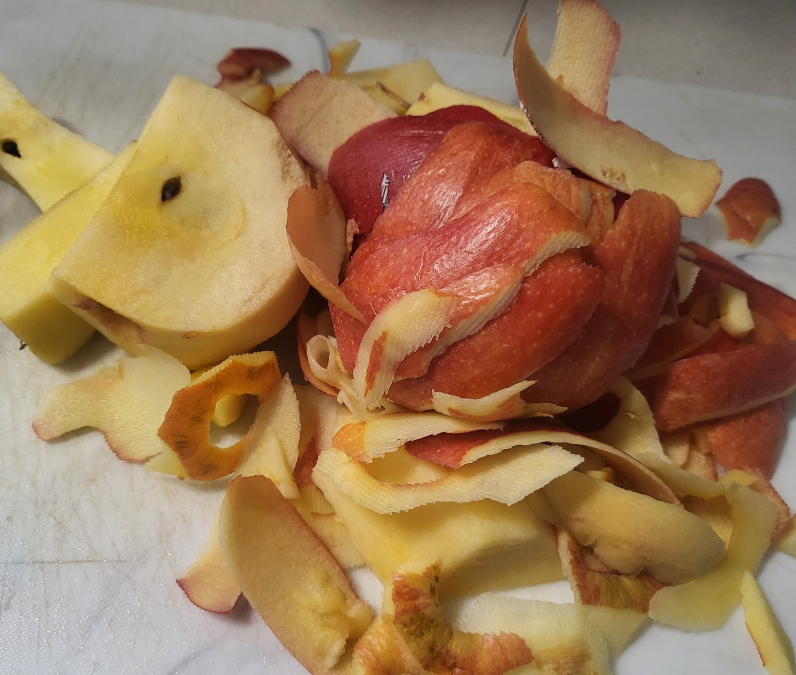
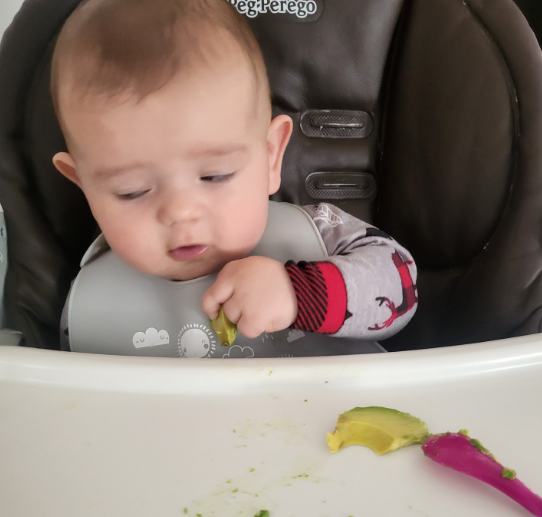
For the Future
In the future, I’m going to use refined searches from the get-go to raise my chances of desired results. I also have collected a few sites that I prefer in comparison to others.

These sites were frequent with results and tend to be in agreeance and up to date on information.
I also found Instagram to be incredibly useful and will likely continue to search there for like-minded accounts. Twitter sometimes yielded a few results but it was sparse. It scores high for education but lower in specific parenting searches. Pinterest will always remain high on my list as I am a very visual person and I love that I can easily organize my saved content to refer to later on.
I hope that you all found my posts entertaining, if not informative, and I think you for all the input you offered and your kind words. Thank you Katia for your wisdom and #teacherhacks. I cannot wait to continue using what I have learned and guide my students to do the same.
Happy Learning





